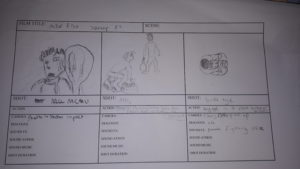Dunkirk uses sound very as a way to separate itself to similar movies while bringing verisimilitude to the scene to make Nolan’s take on the subject is as close and accurate as possible. They use it in a way where the audience can feel the certain emotions these people would have feeled in these situations.
Sound is used as device by Christoper Nolan and Hans Zimmer, by giving a range of verisimilitude sounds to the props and vehicles in the movie such as the engines or the firing of the planes guns. By using these realistic diagetic sounds it makes the movie seem more historical accurate but as well please the audience members who know the different sounds of these certain objects. This is used as a device by giving each object a different sound what furthers the point by everything being distinguishable from the use of sound what brings more tension and drama to the scene when the enemy plane is incoming as the audience knows the sound of engine. So the audience feels both the fear of the men but also by this time they know whats coming without seeing the enemy plane by bringing more of a sense of danger.
The use of the Shepard tone in the scene is well used. This is used to signify to different things to further the plot by showing fear of commander Bolton as the tone is creatively used to match his facial expression to build further tension in the scene and to bring danger by indicating a the plane getting closer even though the audience seems to believe increase making them think danger. The first thing signified with Bolton’s facial expression matching up with the tone is that it brings more fear as the tone helps show the change from relief to shock. This is a narrative device by showing the theme of fear and this humanizes Bolton by showing him to be scared instead of acting strong in-front of his men. The second thing signified is the audience feeling the tension and danger from the use of tone indicating the plane getting closer. This effect is smartly used with the diagetic sound of the engine as the tone shows that Bolton is in shock as he is blocking out the sound of the plane.
Zimmer does well in the score in the film in general but in this scene, he uses the score to add different emotions on screen. Some examples are the peaceful sound of an instrument when Farrier is gliding through the air to indicate relief and for the audience to take in the view of scenery with Hardy’s character. The use of a orchestra can also be heard when Bolton talks to the lady for a few seconds to show how proud he is of the civilians, this shows the audience the respect from certain characters. The orchestra can be heard again after the boat narrowly escapes the gunfire of the plane as it helps to show the celebration and the survival of the men, this affects the audience by them feeling the relief of going from sheperd tone to quiet peaceful instrument in the orchestra to give a better sense of relief.


